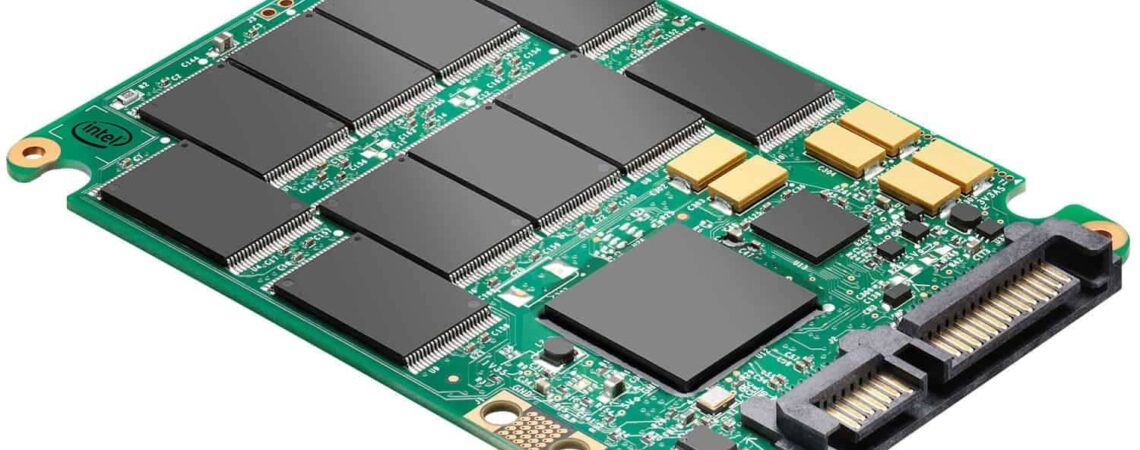
As someone who is passionate about computers, you’re probably familiar with the term “solid-state drive” or SSD. You probably know that they’re better than Hard Disk Drives, or HDDs, but do you really understand how SSD work and why they’re such a big deal?
In this post, we’ll take a closer look at SSDs and the key role that thin films play in their development. We’ll also discuss some of the benefits that SSDs offer over traditional hard drives. So if you’re curious about SSDs and thin films, read on!
How Does SSD Work?
Although SSDs serve the same purpose as HDDs (hard disk drives) – to store data and files – the main difference between the two is that SSDs use ‘flash memory’.
This type of memory works like RAM (random-access memory) but the data will remain, even if the computer loses power.
These types of drives use a grid of electrical cells to send and receive data which are organized into ‘pages’. SSDs will only write new data onto empty pages, which means there is no chance of your data getting overwritten by accident.
Many people often wonder if SSDs are better than HDDs, however they are quite different. SSDs are faster, more durable, quiter, and consume much less energy than HDDs.
Despite HDDs being the more affordable option in many instances, they still are not able to beat SSDs in terms of functionality and performance.
The Benefits and Drawbacks of Using an SSD in Your Computer:
When you’re looking for computer drives, it can often be overwhelming to decide on which type of drive is perfect for your needs.
If you’ve been thinking about whether to invest in a SSD drive for your computer, here are some of the most important advantages and disadvantages that you should be aware of first.
SSDs are very common and are especially known for their use across Apple’s laptop line. They are used because they provide excellent efficiency and performance.
These drives are much faster, use less power than HDDs, have a wide range of form factors, plus they don’t contain any moving parts which means they are much more durable.
However, the main disadvantage of SSDs is that they don’t have as much storage capacity as HDDs. They also aren’t able to handle data erasing, and they can slow down significantly over time as you start to fill up the ‘pages’ with more data and information.
Thin-Film Technology and its Applications on Computer Hardware:
What are Semiconducting Thin-Films?
Thin films have been used in a variety of applications, including in wireless communications, solar cells, and also semiconductor devices.
Thin film technology is used in electronics to help devices get smaller and to reduce the risk of defects. The films are produced in one or more thin layers and are used in many electrical materials like transistors, sensors, and photovoltaic devices.
Due to the flexible nature of thin films, they are able to adapt to different requirements to create a range of components for computer hardware.
The Applications of Thin Films in Electronics and Computer Hardware
Thin films have become essential in the manufacture of transistors, sensors, etc. They are unique in their adaptability and versatility which makes them suitable for producing the microchips that are used in SSD and other computer parts.
Due to the flexibility of thin films and their ability of increasing conduction in solid-state materials, they’re crucial for the development of high-performance hardware.
Many experts and electronics companies have been using thin film technology for over a half a century, and they have pushed forward the use of diodes and microprocessors that many electronic devices rely on.
How Thin Films are Made?
Thin films are made through a deposition process, either physical or chemical deposition. The main difference between these two processes is that physical deposition uses a solid form, whereas chemical uses a gas for the thin film coating.
Both of these processes need to take place in a vacuum chamber to allow the solid target material to vaporise and be deposited into a substrate.
There are a range of different thin film deposition systems and companies that specialise in these processes, like Korvus Technology and their HEX series of compact, thin film deposition systems.
Final Thoughts
Thin-film technology is being explored as a way to create more durable and longer lasting computer hard drives. A solid state drive, or SSD, relies on microchips to store data instead of the spinning disks used in traditional hard drives.
The downside of SSDs is that they are currently much more expensive than traditional hard drives. However, as manufacturing processes improve and demand for SSDs increases, the cost of this technology is likely to drop.
That said, thin film technology is at the core of these advances. With such a flexibility of design and amount of ongoing research on thin films, it’s likely that the average performance of SSD will continue to improve significantly in the next few years.
If you’re looking for a reliable and fast storage solution for your laptop or desktop computer, an SSD may be the answer. Have you tried using a solid state drive? What was your experience? Let us know in the comments below!


